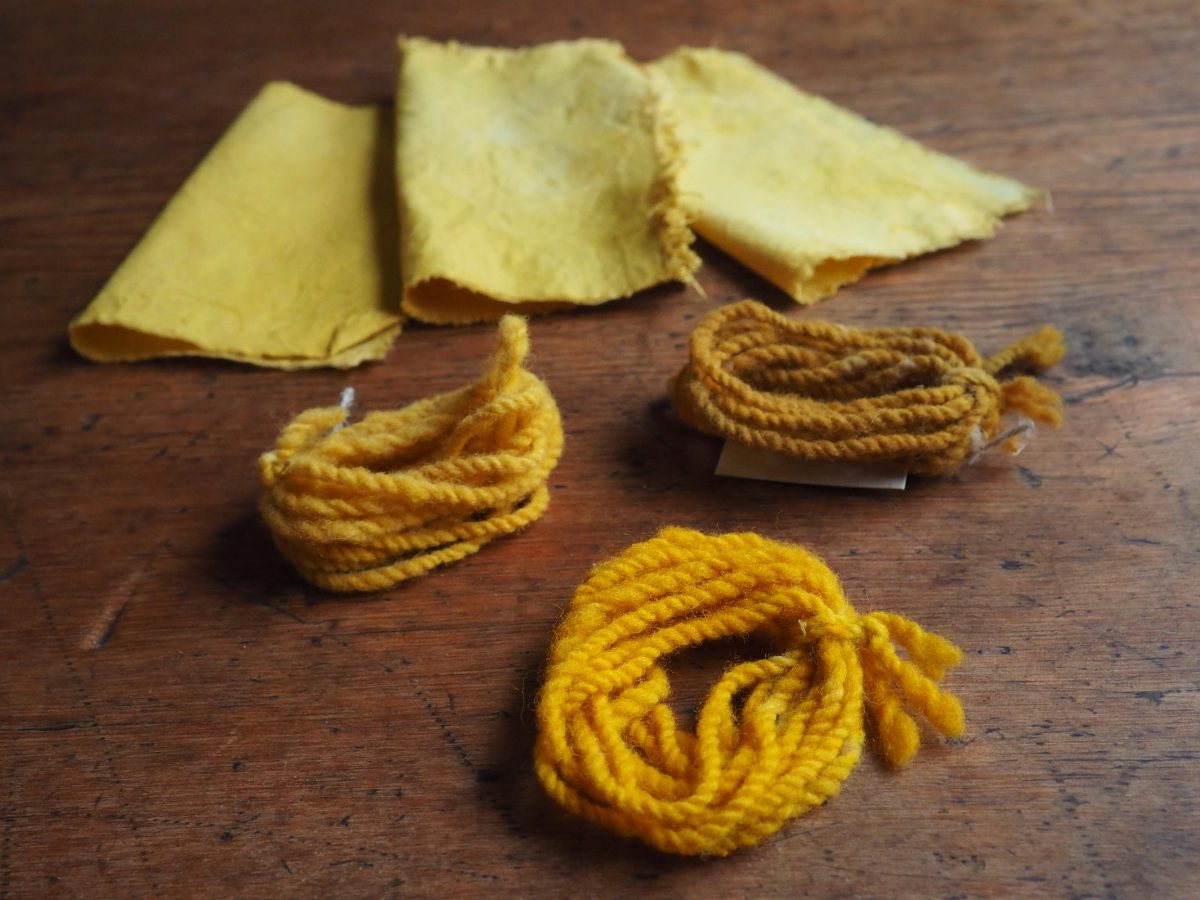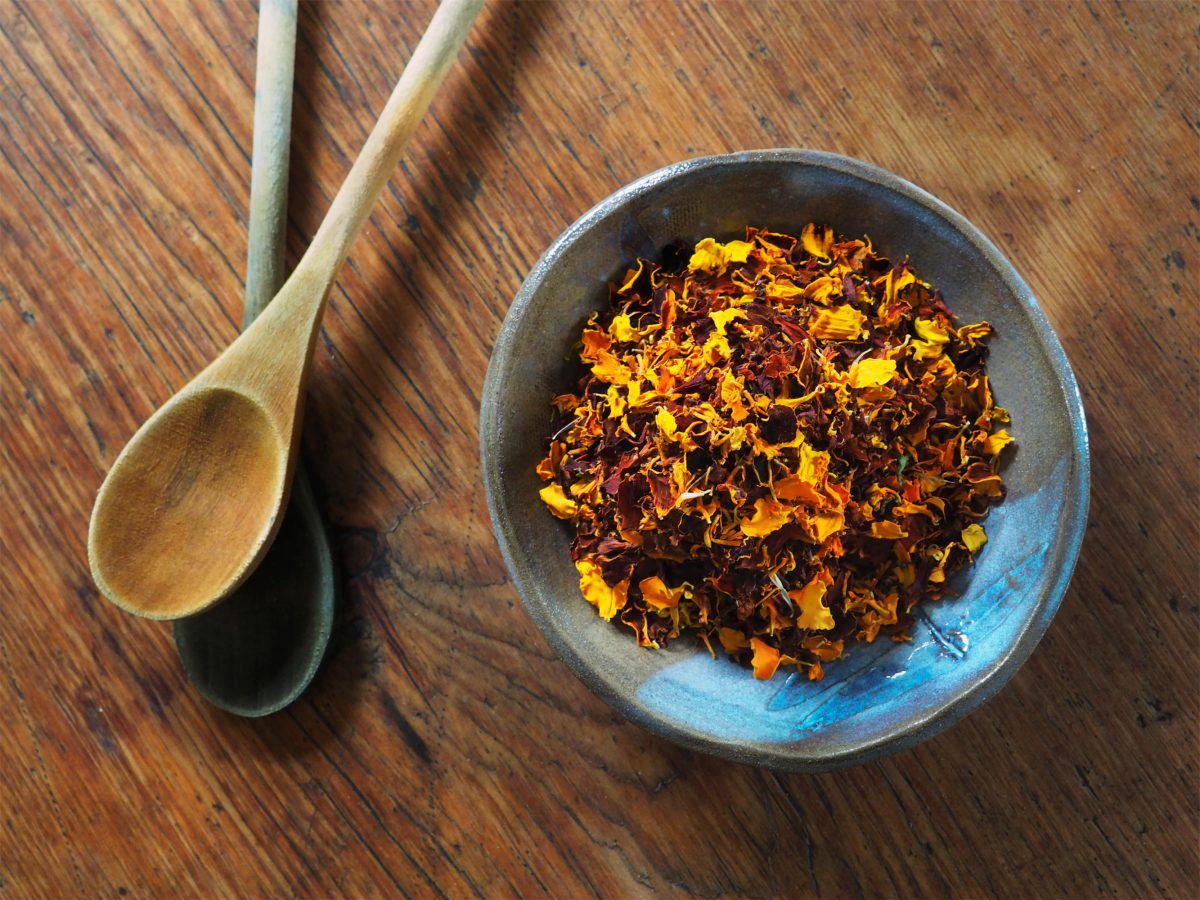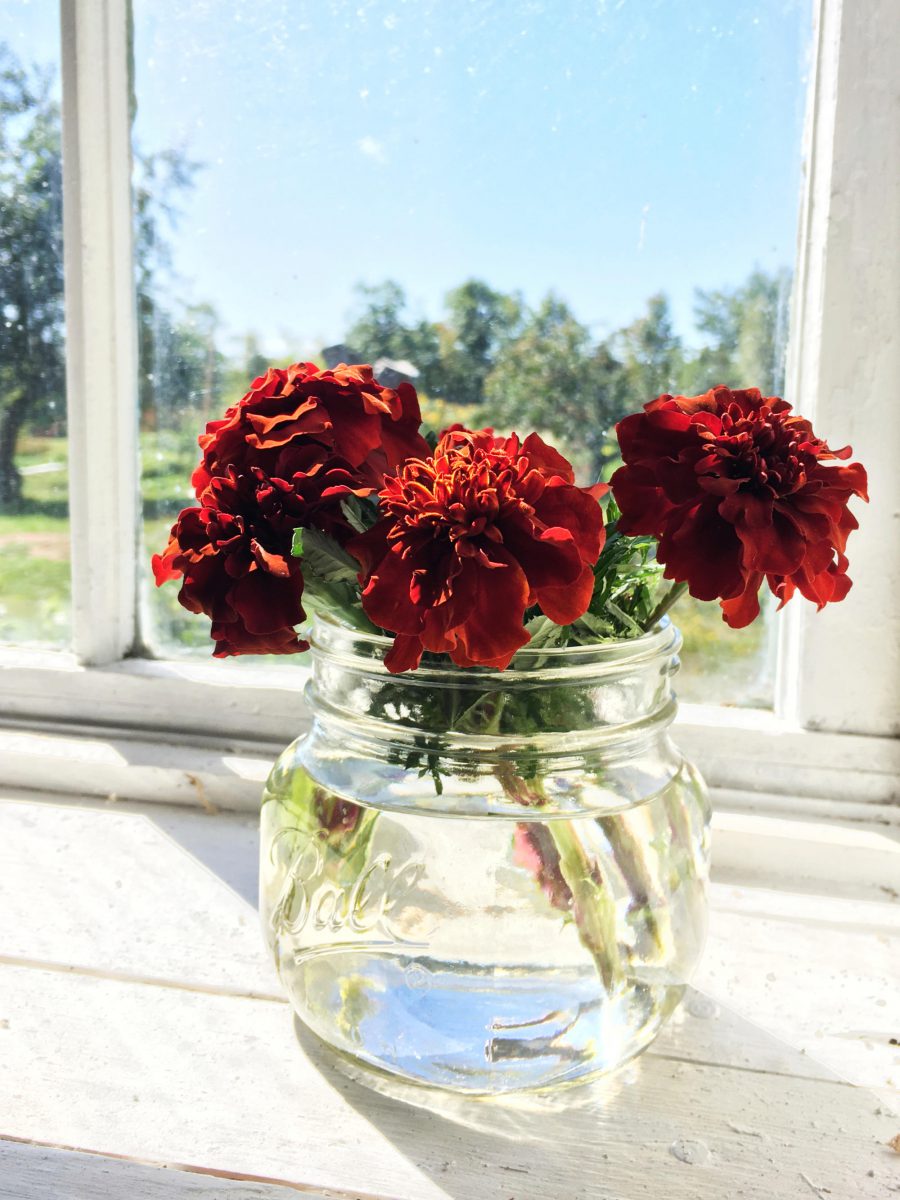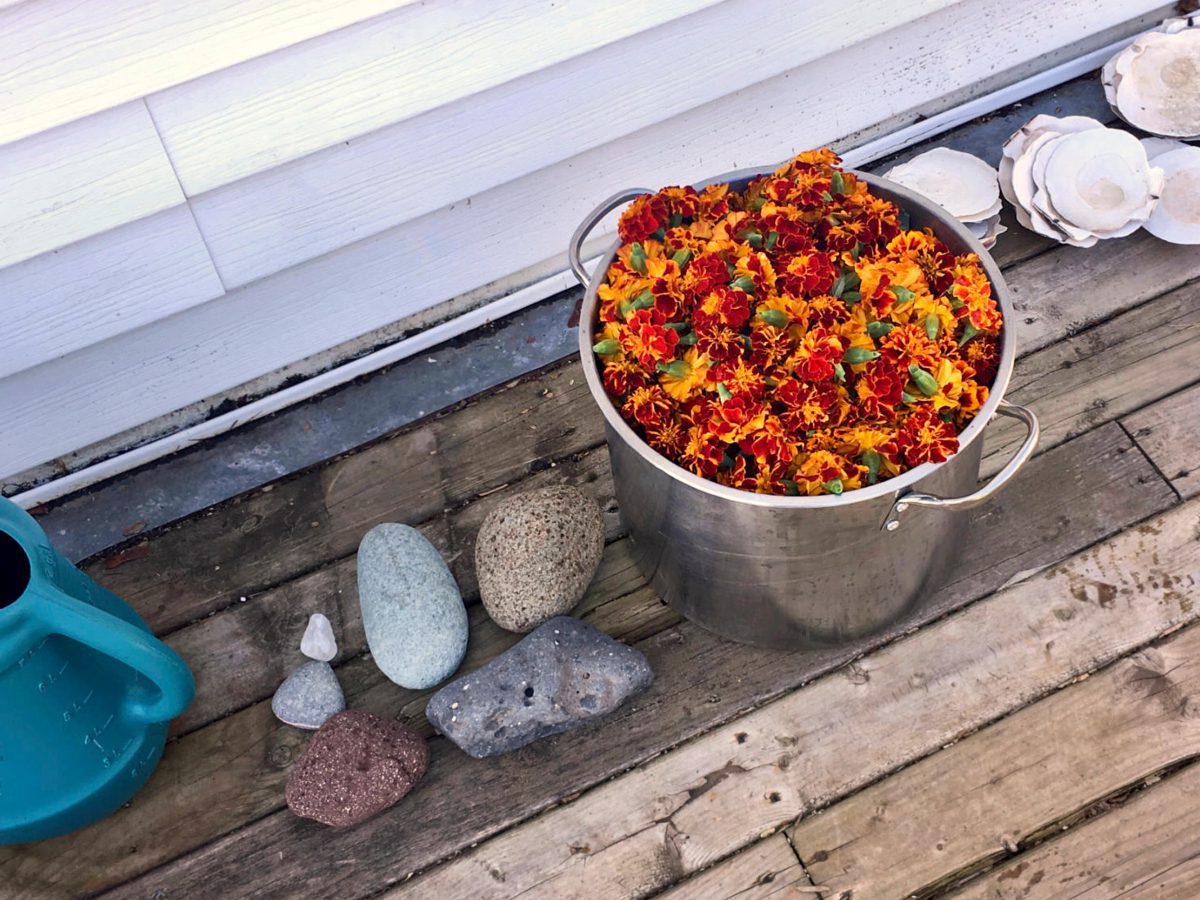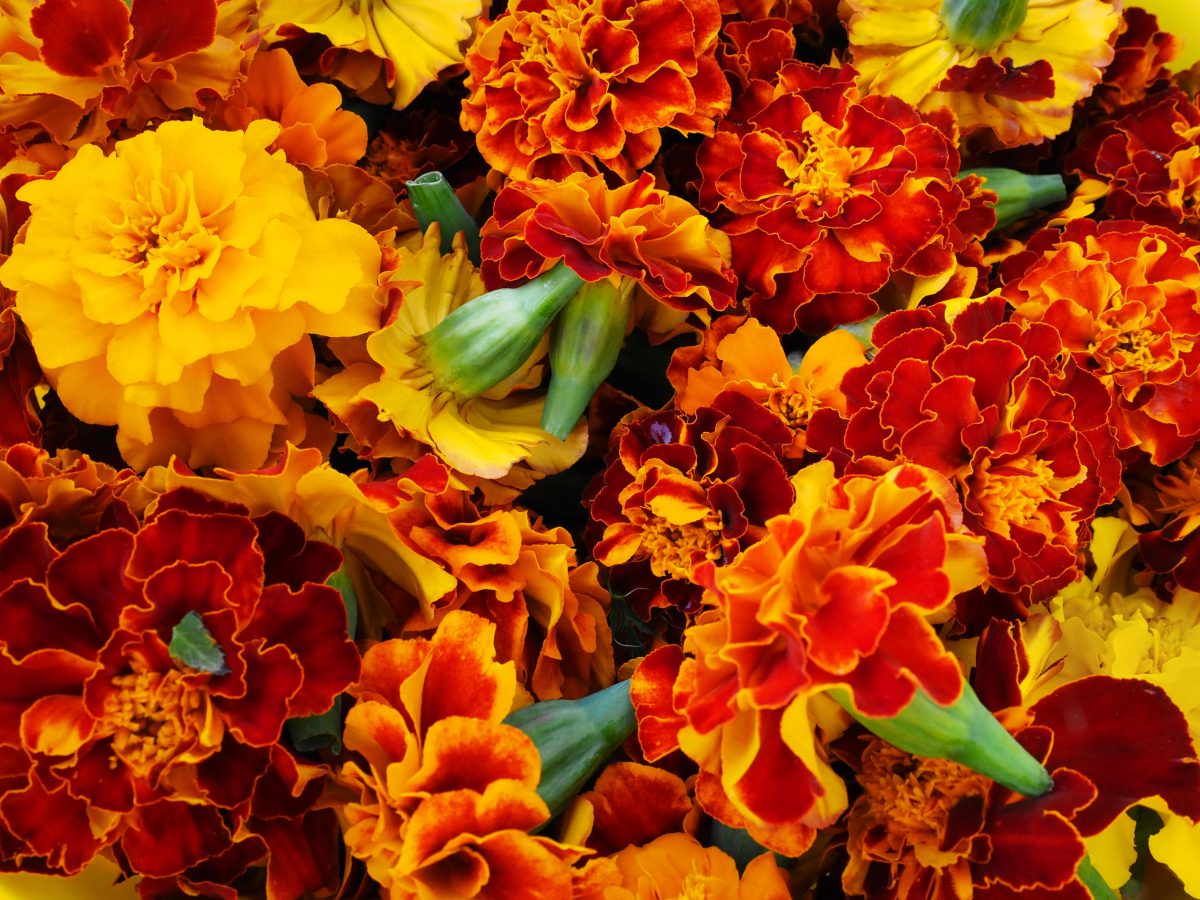Tagetes patula
Our petals are from a mix of french Marigolds. We love to grow rows of these cheerful flowers between rows of taller, more gangly, dye plants. One of our favourite things to do on warm mid-summer nights is to sit with a favourite movie and clip marigold petals from flower heads harvested earlier in the day. Using only the flower petals creates an extremely concentrated dye source and very little plant material is needed to dye a strong shade. We have found that a super concentrated bath will tend to produce a greenish yellow. Using a lighter concentration produces a lovely medium shade of rich, warm yellow.
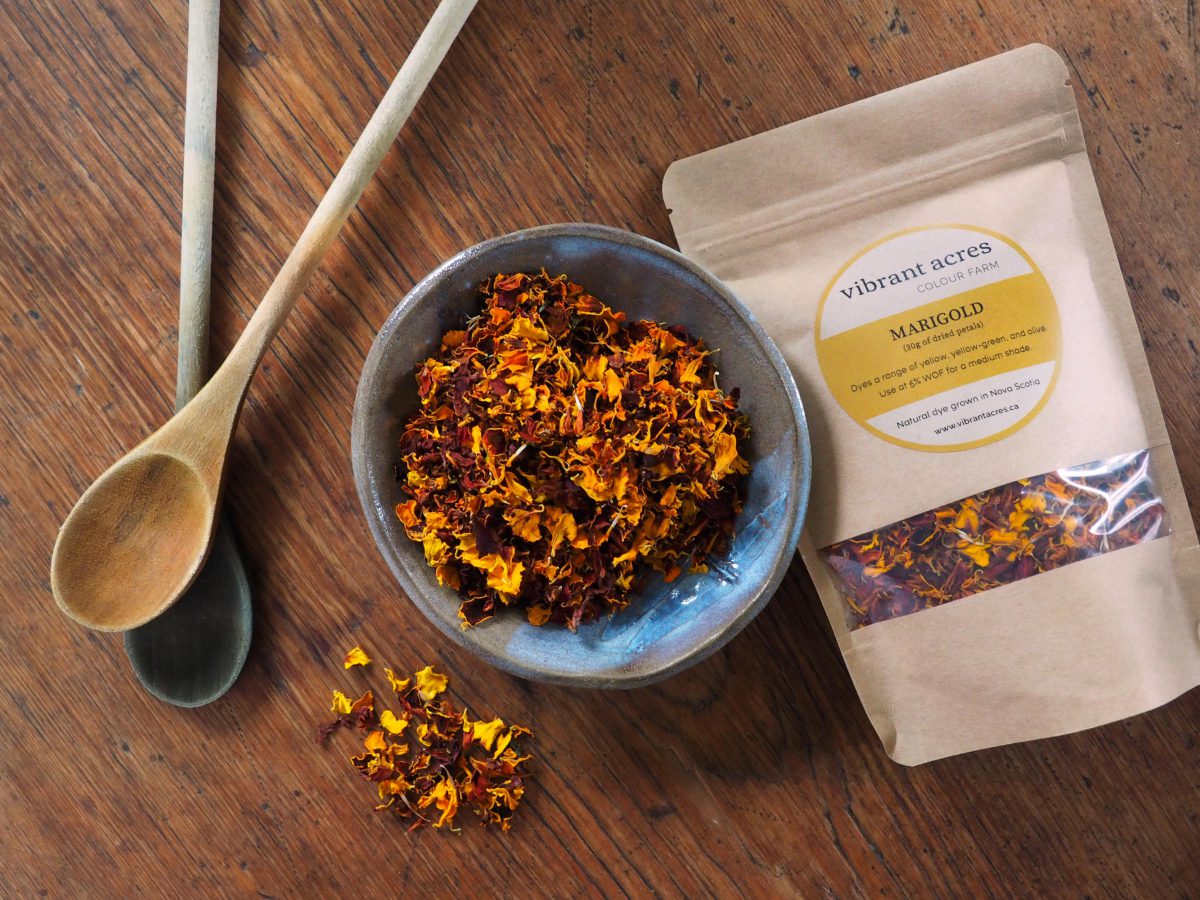
Key Dye Colours: Warm yellow, yellow-green, olive
Dye Process: Colour is extracted by bringing to a gentle simmer until the water turns a strong yellow.
Weight of Fibre (WOF): Use at 5% for a rich medium shade. For a darker colour, use more; for a lighter colour, use less. A small bag will dye ~600g of fibre and a large bag will dye ~2kg of fibre. A typical wool skein is 100g.
Key Modifiers: Iron produces an earthy yellow ochre or olive green.
Washfastness: Moderate–Good. This colour will eventually fade with repeated washing.
Lightfastness: Moderate–Good. This colour will eventually fade when exposed to direct sunlight.
Overall Colourfastness: Moderate to Good.
Marigold is one of the easiest and most satisfying plants to dye with, creating a rich beautiful yellow with a relatively small amount of plant material and little effort of extraction. It is perfect for items that are worn indoors and/or washed infrequently. If your garment does eventually fade, consider overdyeing it to give it new life. Storing naturally dyed items in a dark drawer or closet can help to prolong their life.
Natural colour grown with care
This natural plant dye was grown with care on our small farm in Nova Scotia’s Annapolis Valley. All of our dye plant material is dried on site immediately after harvest to preserve quality and maximum vibrancy of colour.
Natural dyes can only be used on natural fibres (cotton, linen, wool, bamboo, hemp, silk). For best results, natural fibres should be pre-prepared using a mordant or tannin before dyeing. Natural dyes and mordants are available in our online store.
Natural dyes create unique living colours that will evolve and wear over time as they are washed, worn, and loved creating colours and garments that are alive, telling the story of their use. While they are not as consistently repeatable or as durable as many synthetic dyes, they are far more environmentally friendly and, in our opinion, absolutely unmatched in magic and beauty. If you are new to natural dyes, we have a free guide to getting started with natural dyes.
